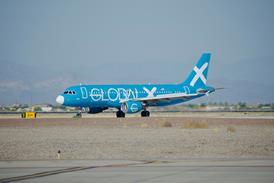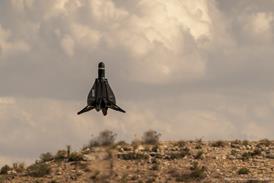A full-scale Orion crew exploration vehicle (CEV) test off the Florida coast in January 2009 is to follow water tank testing NASA has completed with a one-quarter scale model.
In NASA Johnson Space Center's 23.5 million litre (6.2 million USgal) Neutral Buoyancy Laboratory engineers obtained Orion flotation characteristics data. A wave tank at Texas A&M University has also been used with a smaller model for sea-state vehicle stability research.
During the testing a prototype CEV flotation collar was evaluated along with a new seal design and updated wireless communications.
Testing will continue in October at the US Navy's Naval Surface Warfare Center in Carderock and at the Aberdeen Proving Ground, both in Maryland.
The full-scale test article used in January will help create water-based landing safety procedures and crew recovery training for the Kennedy Space Center Human Space Flight Support team's search and rescue divers.
NASA has completed nozzle side-load testing for its upper stage J-2X rocket engine using sub-scale test articles at its Marshall Space Flight Center.
Side loads - forces exerted on the nozzle's sides - are high during engine start as its exhaust fills the nozzle. Then at shutdown, when the plume empties from it, there is uneven pressure around the cone's interior.
The testing will help engineers design a nozzle that can withstand the loading but also not be so heavy it detracts from the rocket's performance. Some of the test articles also simulated the injection of turbopump exhaust gas to cool the nozzle.
"The recent tests...[used] warm air instead of hot rocket exhaust, a process termed "cold flow" testing. Since testing began in March 2008, more than 1,000 J-2X nozzle start simulations have been performed," says NASA.
The agency had chosen a composite nozzle but has since decided to use metal. The J-2X, being developed by NASA and Pratt & Whitney Rocketdyne, will power the upper stages of the Ares I crew launch vehicle and the Ares V cargo launch vehicle.
Source: Flight International























